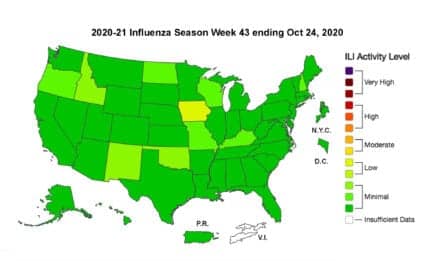Bats in Saudi Arabia were found to be infected with several alphacoronaviruses and betacoronaviruses, with the one bat possessing a virus with 100% nucleotide identity to the Middle East Respiratory Syndrome coronavirus (MERS-CoV) from the human index case-patient, according to research published by Emerging Infectious Diseases, a CDC journal. Researchers believe that, while this indicates the bats are a reservoir, “given the rarity of MERS CoV sequences detected by our survey and the broad distribution of MERS cases throughout the Middle East, we speculate that there are probably other hosts.”
In October 2012 and April 2013, three agencies collected samples from bats in regions where MERS cases had been identified. During the October investigation, the team interviewed the family of an index case-patient and collected samples from bats less than 12 km from his home, in an abandoned date palm orchard, and less than 1 km from his place of employment, a hardware store that fronted a garden and date palm orchard.
Samples were taken from 96 bats from seven different species and sent to the lab at the Center for Infection and Immunity at Columbia University’s Mailman School of Public Health, where colleagues conducted analyses and sequencing.
“Now that we know which species of bat carries it, we can focus on understanding how it may have made the jump into people,” said Jonathan Epstein, DVM, MPH, associate vice president at EcoHealth Alliance.
“These findings are only the tip of the iceberg, and further investigations are required including the need to test a larger base of samples from bats, other wildlife, and domesticated animals to better understand the transmission of MERS Coronavirus,” said Kevin Olival, PhD, senior research scientists at EcoHealth Alliance.









